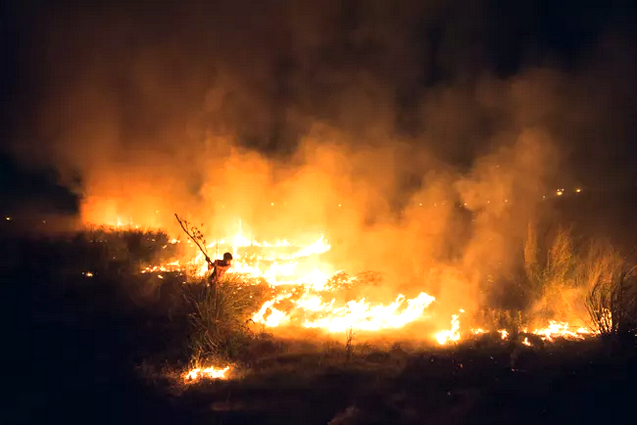Winning images highlight impact of coastal erosion, forest fires, and drought.

|
|
Michele Lapini / Environmental Photographer of the Year 2021
|
These are some of the winning images in the Environmental Photographer of the Year competition. In its 14th year, the contest features global environmental photography. The 2021 event received nearly 7,000 images from professional and amateur photographers from more than 119 nations.
Michele Lapini won the "Environments of the Future" award for the photo he shot above in Modena, Italy. "Flood" was taken in 2020 and is focused on a house submerged by flooding of the River Panaro in Italy's Po Valley due to heavy rainfall and melting snow.
Winners were announced at the United Nations Climate Change Conference (COP26) in Glasgow.
The competition was organized by Nikon, as well as Chartered Institution of Water and Environmental Management (CIWEM), a U.K. charity dedicated to improving water and environmental management, and WaterBear, an on-demand streaming platform focused on environmental issues.
The voting for the People’s Choice Award is now open to the public via social media. To vote, hit "like" for your favorite.
Here's a look at some of the other winners, including the Environmental Photographer of the Year.
Environmental Photographer of the Year

|
|
Antonio Aragon Renuncio / Environmental Photographer of the Year
2021
|
A child sleeps inside his house destroyed by coastal erosion on Afiadenyigba beach. Sea levels in West African countries continue to rise and thousands of people have been forced to leave their homes.“I am not very optimistic about the future of this child,” Renuncio says. “Although I hope that people's reaction to seeing this, and many other photographs, will be the preamble for this child, along with many others, to have a better chance at life than the one they have today.”
Young Environmental Photographer of the Year

|
|
Amaan Ali / Environmental Photographer of the Year 2021 |
A boy fighting surface fires in a forest near his home in Yamuna Ghat, New Delhi, India. According to locals, forest fires caused by human activity in the area are a common occurrence due to adverse living conditions.
The Resilient Award

|
|
Ashraful Islam / Environmental Photographer of the Year 2021
|
Flocks of sheep search for grass amongst the cracked soil. Extreme droughts in Bangladesh have created hardships for all living beings.
Sustainable Cities

|
|
Simone Tramonte / Environmental Photographer of the Year 2021
|
A photobioreactor at Algalif’s facilities in Reykjanesbaer, Iceland, produces sustainable astaxanthin using clean geothermal energy. Iceland has shifted from fossil fuels to 100% of electricity and heat from renewable sources.
Climate Action

|
|
Kevin Ochieng Onyango / Environmental Photographer of the Year
2021
|
A boy takes in air from the plant, with a sand storm brewing in the background. This is an impression of the changes to come.
Water and Security

|
|
Sandipani Chattopadhyay / Environmental Photographer of the Year
2021
|
Irregular monsoon seasons and droughts cause algal bloom on the Damodar river. Algal blooms prevent light from penetrating the surface and prevent oxygen absorbtion by the organisms beneath, impacting human health and habitats in the area.Links
- The 2021 winners of the Environmental Photographer of the Year have been announced at COP26
- Environmental Photographer of the Year 2021 Winners revealed at the UN Climate Change Conference (COP26).
- The Same Arctic Landscape, A Century Apart. Notice Anything Different?
- Satellite images reveal accelerated rate of tree loss in Amazon this year
- Stunning photos of climate change
- Images of Change - Climate Change: Vital Signs of the Planet
- Enduring and surviving the climate crisis – in pictures
- Photos show a climate change crisis unfolding—and hope for the future
- A Year Of Climate Change In Photos
- Climate Change Captured in Stunning Antarctic Ice Photos
- National Geographic: Climate Change Photographs



